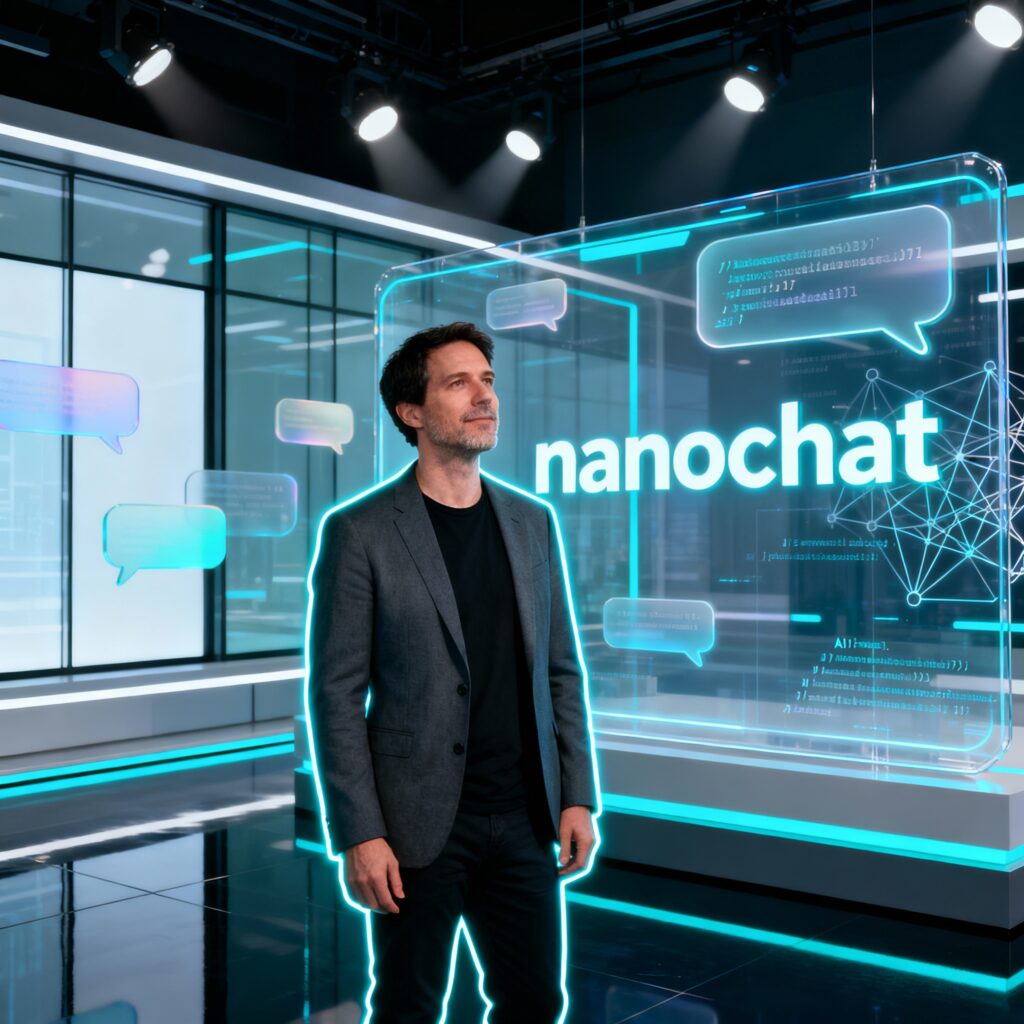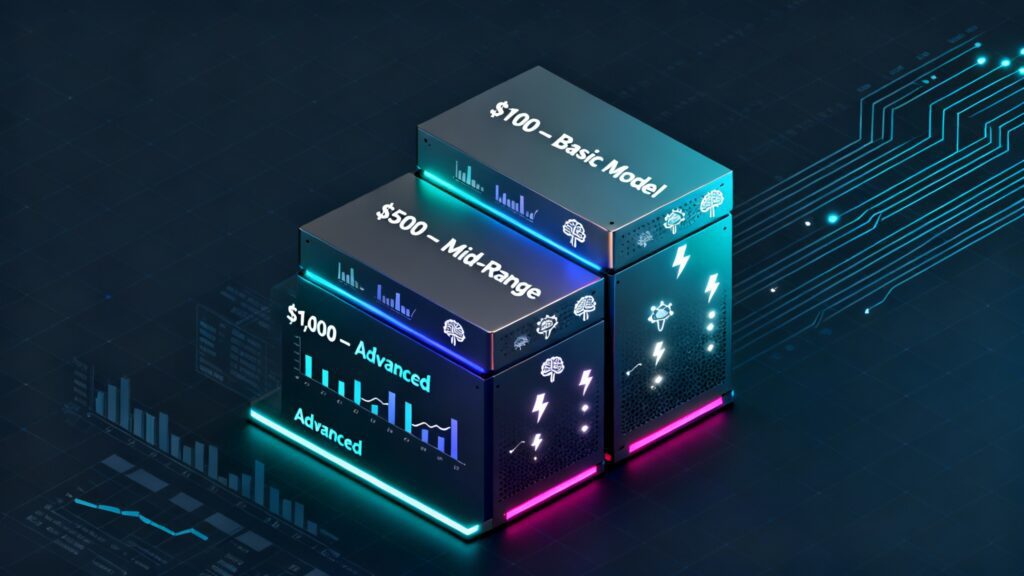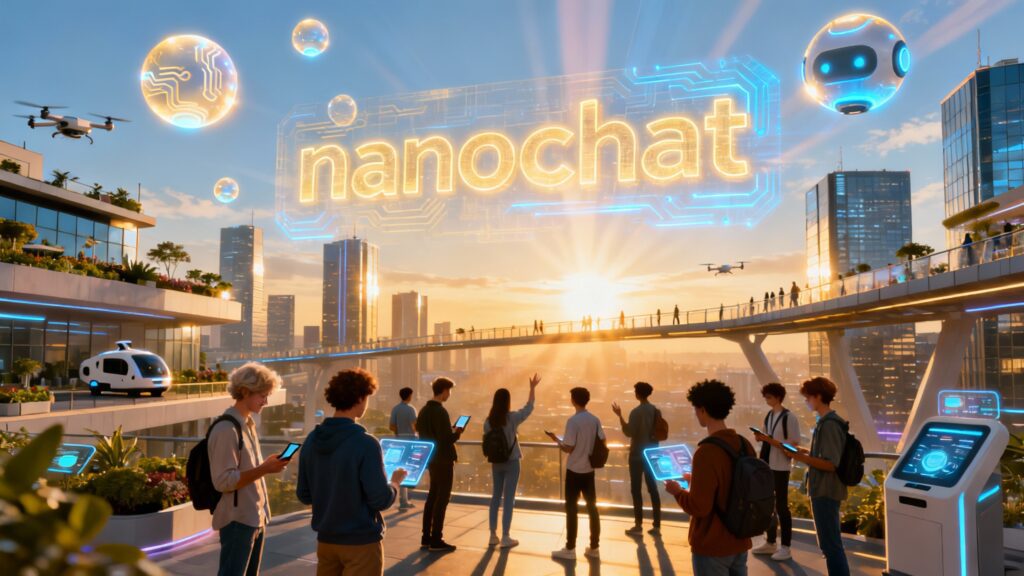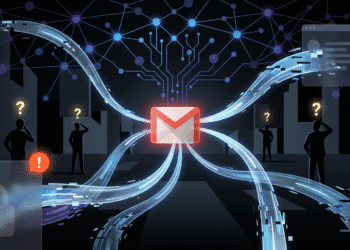OpenAI co-founder unveils minimal ChatGPT clone that lets anyone build their own language model in just four hours

The AI world just got a whole lot more accessible. Andrej Karpathy, the legendary AI researcher and OpenAI co-founder, has dropped something special for developers and AI enthusiasts everywhere. On October 13, 2025, he announced nanochat, an open-source project that’s turning heads across the tech community. Why? Because it lets you build your very own ChatGPT-style language model from scratch—and you can do it in as little as four hours.
This isn’t just another AI tool. It’s a complete, end-to-end pipeline that takes you from zero to chatbot hero. And the best part? You don’t need a PhD or a massive budget to get started.
What Makes nanochat Different?
Let’s talk about what sets nanochat apart from everything else out there. Karpathy’s previous project, nanoGPT, was already a hit in the AI community. But it only handled pretraining—basically teaching a model to predict the next word in a sequence. That’s just the first step in creating something like ChatGPT.
Nanochat goes way beyond that. It’s a full-stack solution that covers everything you need to build a conversational AI. We’re talking about pretraining, supervised fine-tuning (SFT), and even reinforcement learning (RL). All wrapped up in about 8,000 lines of clean, readable code.
According to Karpathy’s announcement on X, the process is surprisingly straightforward. “You boot up a cloud GPU box, run a single script and in as little as 4 hours later you can talk to your own LLM in a ChatGPT-like web UI,” he explained. That’s pretty remarkable when you consider that building something like this used to require teams of engineers and months of work.
The repository includes everything from tokenizer training (written in Rust for speed) to a complete inference engine with KV caching. You can interact with your model through either a command-line interface or a slick web UI that looks and feels like ChatGPT. The system even generates a markdown report card that summarizes your model’s performance across various benchmarks.
The Technical Pipeline: From Raw Data to Chatbot
So how does this actually work? Let’s break down the pipeline that nanochat uses to transform raw data into a functioning conversational AI.
First up is tokenizer training. Nanochat uses a new Rust implementation to build a tokenizer—the component that breaks text into chunks the model can understand. This is crucial because how you tokenize text affects everything downstream.
Next comes pretraining on FineWeb, a massive dataset of web text. This is where the model learns the basic patterns of language. Think of it as teaching the AI to read before you teach it to have conversations.
Then there’s midtraining on user-assistant conversations from SmolTalk. This phase helps the model understand the back-and-forth nature of dialogue. It also learns to handle multiple-choice questions and even use tools—like executing Python code in a sandbox environment.
Supervised fine-tuning comes next. This is where the model gets really good at specific tasks. The system evaluates performance across several benchmarks: ARC-Easy and ARC-Challenge for world knowledge, MMLU for multiple-choice questions, GSM8K for math problems, and HumanEval for code generation.
Finally, there’s optional reinforcement learning using GRPO (Group Relative Policy Optimization) on GSM8K. This helps the model get even better at solving math problems through trial and error.
The whole pipeline is designed to be minimal yet complete. No bloated dependencies. No mysterious black boxes. Just clean, hackable code that you can actually understand and modify.
Cost and Performance: What Can You Actually Build?

Here’s where things get really interesting. Karpathy laid out three different training scenarios, each with different costs and capabilities.
The budget option runs about $100 and takes roughly four hours on an 8xH100 GPU node. This gets you a basic ChatGPT clone that you can interact with. It won’t blow your mind, but it’s a functioning conversational AI that you built yourself.
Scale up to about 12 hours of training, and your model starts to surpass GPT-2 on the CORE benchmark. That’s a significant milestone—GPT-2 was considered impressive when OpenAI released it back in 2019.
Go all the way to approximately $1,000 and 42 hours of training, and you get something genuinely useful. This model can solve simple math problems, write basic code, and answer multiple-choice questions with reasonable accuracy. According to the blockchain.news report, a model trained for 24 hours can hit scores in the 40s on MMLU, 70s on ARC-Easy, and 20s on GSM8K. That’s roughly equivalent to 1/1000th the computational power (FLOPs) of GPT-3.
Let’s put that in perspective. GPT-3 cost millions of dollars to train. You can get 1/1000th of that capability for a thousand bucks. That’s democratization of AI in action.
Why This Matters for Developers and Researchers
The release of nanochat is a big deal for several reasons. First, it dramatically lowers the barrier to entry for AI experimentation. Before, if you wanted to understand how ChatGPT-style models work, you had to wade through complex codebases with countless dependencies. Or you had to rely on black-box APIs from big tech companies.
Now? You can see the entire pipeline laid out in 8,000 lines of code. You can modify it. Break it. Improve it. Learn from it.
Karpathy himself emphasized this educational aspect. “My goal is to get the full ‘strong baseline’ stack into one cohesive, minimal, readable, hackable, maximally forkable repo,” he explained in his announcement. Nanochat will serve as the capstone project for LLM101n, an undergraduate-level course at Eureka Labs (Karpathy’s AI education company) that guides students through building their own AI models.
For researchers, nanochat offers something equally valuable: a standardized baseline for experimentation. Just like nanoGPT became a go-to starting point for research on language model pretraining, nanochat could become the standard for research on fine-tuning, reinforcement learning, and conversational AI.
Business Opportunities and Market Impact
From a business perspective, nanochat opens up some fascinating possibilities. The AI market is projected to reach $407 billion by 2027, according to Statista. But until now, most of that value has been captured by big tech companies with the resources to train massive models.
Nanochat changes the equation. Suddenly, startups and small businesses can afford to build custom chat models tailored to specific industries. Need a customer service bot that understands your company’s products inside and out? Train it yourself for a few hundred dollars. Want an educational assistant that speaks to students in a particular way? Build it.
The cost-effectiveness is striking. At $100 for a basic model or $1,000 for something more capable, we’re talking about price points that are accessible to individual developers and small teams. That’s orders of magnitude cheaper than using commercial APIs at scale or trying to train models using traditional approaches.
This could accelerate AI adoption across sectors that have been priced out of the AI revolution. Healthcare clinics could build patient interaction bots. Small e-commerce businesses could create personalized shopping assistants. Educational institutions could develop tutoring systems customized to their curriculum.
The competitive landscape is shifting too. OpenAI, Google, and Meta have dominated LLM development because of their massive resources. But nanochat’s hackable, open-source nature encourages forking and customization. It’s the same dynamic that made nanoGPT influential in research—now applied to the full stack of conversational AI.
Technical Innovations and Implementation Details
Let’s dig into some of the technical innovations that make nanochat work. The inference engine is particularly clever. It supports KV caching, which dramatically speeds up generation by reusing computations from previous tokens. It also handles prefill and decode phases separately, optimizing for both throughput and latency.
Tool integration is another standout feature. The model can execute Python code in a lightweight sandbox environment. This opens up possibilities for AI assistants that can actually do things—not just talk about doing things. Imagine a chatbot that can analyze data, generate visualizations, or automate tasks by writing and running code.
The evaluation framework is comprehensive. Nanochat assesses models on CORE scores, which aggregate performance across multiple dimensions. It tests world knowledge with ARC-Easy and ARC-Challenge, evaluates reasoning with MMLU’s multiple-choice questions and It checks math skills with GSM8K. And it measures coding ability with HumanEval.
This multi-faceted evaluation is crucial. A model might be great at one task but terrible at others. By testing across diverse benchmarks, nanochat gives you a realistic picture of what your model can and can’t do.
The codebase itself is designed for clarity. Karpathy is famous for his clean, educational code, and nanochat lives up to that reputation. Everything is in one place. Dependencies are minimal. You can trace the flow from raw data to final output without getting lost in abstraction layers.
Challenges and Considerations
Of course, nanochat isn’t without challenges. GPU resources are still a bottleneck. Even the budget option requires access to high-end hardware like H100 GPUs. These aren’t sitting in most people’s closets—you’ll need to rent them from cloud providers.
Training time is another consideration. Four hours is fast compared to traditional approaches, but it’s still four hours of expensive GPU time. And if you want a more capable model, you’re looking at days of training.
There are also questions about data quality and bias. Nanochat trains on FineWeb and SmolTalk, but these datasets aren’t perfect. They contain biases and errors that will be reflected in your model. Responsible use requires understanding these limitations and implementing appropriate safeguards.
Regulatory considerations matter too. If you’re building a chatbot for a regulated industry like healthcare or finance, you need to ensure compliance with data privacy laws. Just because you can train a model doesn’t mean you should deploy it without proper vetting.
The Future of Accessible AI
Looking ahead, nanochat could have far-reaching implications. Karpathy mentioned that the project might evolve into a research harness or benchmark, similar to how nanoGPT became a standard tool in the research community.
We’re likely to see community-driven improvements. Open-source projects thrive when developers contribute optimizations, bug fixes, and new features. Nanochat’s clean codebase makes it easy to contribute, which should accelerate its evolution.
The educational impact could be profound. LLM101n will use nanochat as its capstone project, potentially training a new generation of AI developers who understand these systems from the ground up. That’s different from the current situation, where many people use AI tools without really understanding how they work.
Industry standardization is another possibility. If nanochat becomes widely adopted, it could establish conventions for how minimal LLM stacks should be structured. This would make it easier for developers to share ideas and build on each other’s work.
The competitive dynamics in AI could shift as well. When more people can build capable models cheaply, the advantage of big tech companies diminishes. Innovation could come from unexpected places—individual developers, small startups, academic labs with limited budgets.
Ethical Implications and Responsible Use
With great power comes great responsibility, and nanochat is no exception. Making it easy to build conversational AI raises important ethical questions.
One concern is misuse. Bad actors could use nanochat to create convincing chatbots for scams, misinformation campaigns, or other harmful purposes. The low cost and accessibility that make nanochat great for legitimate uses also make it attractive for malicious ones.
Bias is another issue. Language models learn from their training data, which means they inherit whatever biases exist in that data. A model trained on web text will reflect the biases present in online discourse. Users need to be aware of this and take steps to mitigate it.
Over-reliance on AI outputs is a subtler danger. Just because a model can generate fluent text doesn’t mean that text is accurate or appropriate. Users need to verify outputs, especially for high-stakes applications.
Transparency is crucial. If you deploy a chatbot built with nanochat, users should know they’re talking to an AI. They should understand its limitations. And they should have recourse if something goes wrong.
The AI community will need to develop best practices for responsible use of tools like nanochat. This includes guidelines for evaluation, deployment, monitoring, and updating models as issues arise.
Getting Started with nanochat
So how do you actually get started with nanochat? The GitHub repository is your first stop. It includes detailed documentation, setup instructions, and example scripts.
You’ll need access to cloud GPUs. Major providers like AWS, Google Cloud, and Azure all offer GPU instances. Shop around for the best rates—prices vary significantly between providers and regions.
The single-script approach makes setup straightforward. You don’t need to cobble together multiple tools or manage complex dependencies. Just follow the instructions, run the script, and wait for your model to train.
Start small. The $100, 4-hour option is perfect for learning the ropes. You’ll get a feel for the process without breaking the bank. Once you understand how everything works, you can scale up to more capable models.
Experiment with the code. That’s the whole point of nanochat—it’s designed to be hackable. Try different hyperparameters. Swap in different datasets. Modify the architecture. Break things and learn from what happens.
Join the community. Open-source projects thrive on collaboration. Share your experiences, ask questions, and contribute improvements. The nanochat community will likely grow quickly, creating a valuable resource for learning and problem-solving.
Conclusion: A New Era of AI Accessibility

Andrej Karpathy’s nanochat represents a significant milestone in the democratization of AI. By packaging the entire pipeline for building a ChatGPT-style model into 8,000 lines of clean, minimal code, he’s made advanced AI development accessible to a much broader audience.
The implications are far-reaching. Researchers get a standardized baseline for experimentation. Students get a capstone project that teaches them how these systems really work. Developers get a starting point for building custom conversational AI. Businesses get an affordable path to AI adoption.
Of course, challenges remain. GPU costs, training time, data quality, and ethical considerations all require careful attention. But the fundamental barrier—the complexity and opacity of building conversational AI—has been dramatically lowered.
As the AI field continues to evolve at breakneck speed, tools like nanochat ensure that innovation isn’t limited to well-funded labs at big tech companies. Anyone with curiosity, determination, and access to cloud GPUs can now build their own language model and learn how these transformative technologies actually work.
That’s the kind of accessibility that drives real progress. And it’s exactly what we need as AI becomes increasingly central to how we work, learn, and communicate.
The code is out there. The documentation is clear. The cost is manageable. What will you build?
Sources
- Blockchain.news – Minimal Full-Stack ChatGPT Clone with End-to-End LLM Training Pipeline Released by Andrej Karpathy
- Analytics India Magazine – Andrej Karpathy Releases nanochat, a Minimal ChatGPT Clone
- Andrej Karpathy’s X/Twitter Announcement
- nanochat GitHub Repository









